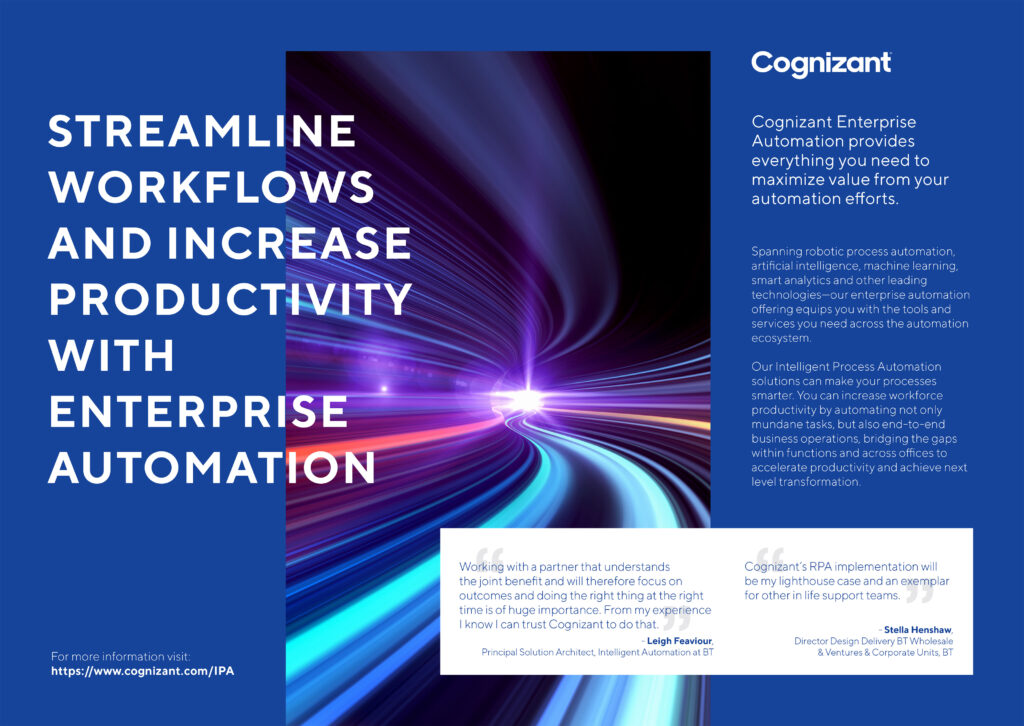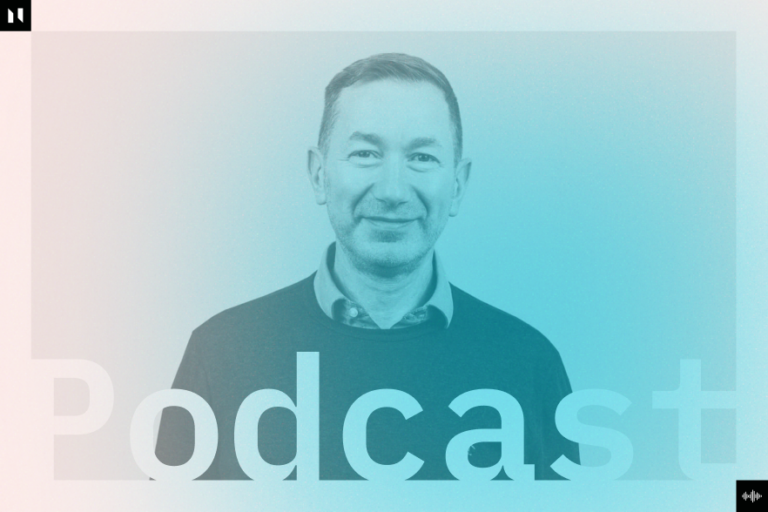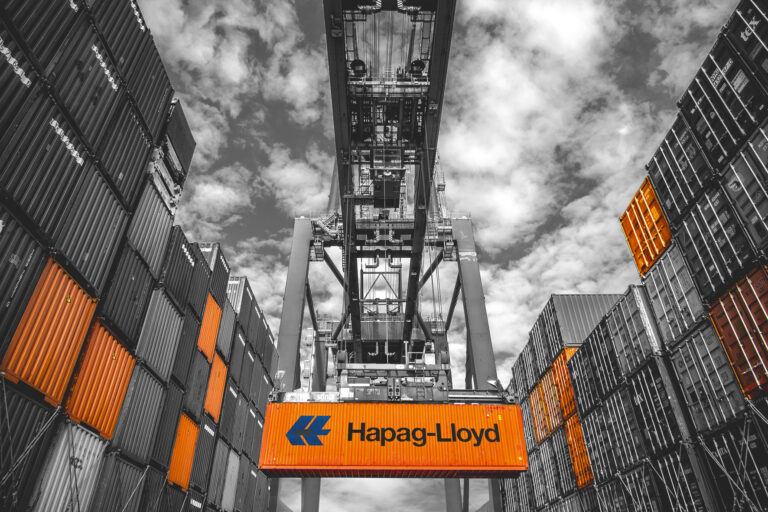
Leigh Feaviour is upgrading tens of thousands of hours of employee time at one of the oldest and largest telcos in the world. Digital Bulletin finds out how.
In 1846, in a modest office nestled in the smoggy shadow of the Bank of England in London, the world’s first telecoms company sparked into life. William Fothergill Cooke had abandoned his career as a doctor to combine with brilliant experimental engineer Charles Wheatstone to bring his revolutionary signalling system to the public. The telegraph had gone mainstream.
Their company, the Electric Telegraph Company (ETC), would go on to utterly transform the way society communicated. Via railways, overhead cables and paddle-steamers, ETC networked the nation with mutton-chopped Victorian vigour before expanding across the waves into continental Europe, and all before it was old enough to buy a drink. It was the social media unicorn of its day.
ETC would go on to form the centrepiece of a nationalised telecoms monopoly in the UK, part of the General Post Office, which spent the next 100 years innovating new technologies and digging telecoms infrastructure into the fabric of the land. Eventually, 138 years after its entrepreneurial beginnings, the GPO decided to carve off its telecoms operation. British Telecom was born – a fresh new privatised enterprise possessed of a heritage longer and richer than any other in the world.
Leigh Feaviour, a young apprentice software tester, joined the company five years later. He would go on to take a front row seat as the company – now called simply BT – rapidly expanded, digitised, and unleashed itself onto the world stage.
Feaviour quickly ascended the ranks at BT, moving from testing into project management and ultimately onto leading major transformation programmes. There were many such endeavours within the organisation, grappling as it was with the structural hangovers of privatisation and the challenge of preparing the national infrastructure it maintained for the internet age.
Feaviour recalls: “I’ve done lots of different jobs in the company in the last thirty years. One of the great things about BT is the diverse nature of all the different roles in the company. There were some very big, complex transformational programmes that I managed there.
“Now I find myself here, doing this role, looking at the technologies required to support our automation ambitions in the company.”
Feaviour sits amongst his team in an open-plan office beneath BT’s Pegasus Tower, a 1970’s era monolith overlooking the company’s sprawling Adastral Park research campus. Situated on the coastal edge of eastern England, the park was built before privatisation on the site of a former experimental aircraft base. It now boasts companies such as Fujitsu, Cisco and Juniper Networks amongst its tenants.
While Feaviour is humble in introducing his team’s work within BT’s central Technology division, as Principal Solution Architect for Intelligent Automation he is in fact overseeing fundamental technology-driven change for a 100,000-strong workforce serving customers in 180 countries.
The overriding objective of Feaviour’s team is to release the potential of automation technologies to both transform the experience of working at BT for the better and provide a continuously improving experience for BT’s customers around the world.
“Robotic process automation – or RPA – is where we take simple, repetitive, mundane tasks that humans do and we train software robots to perform those activities instead. The benefits to the employee are a more interesting job with fewer mundane tasks and more time to deal with customers or more complex issues,” explains Feaviour.
BT’s first RPA application went live relatively recently, in April 2017. Its chosen partner to deliver the work was UK-based Blue Prism, recognised as the original pioneer of back-office process automation. Just two-and-a-half years down the road, BT has already leveraged Blue Prism’s platform to automate 163 individual processes using 266 robots, or digital workers, which together amount to more than 20,000 hours per month of manual effort saved. This is being used to facilitate growth in certain teams who can now take on more varied work, and it’s an enabler for bringing call centres back into the UK – something BT’s customers have said they’d like to see.
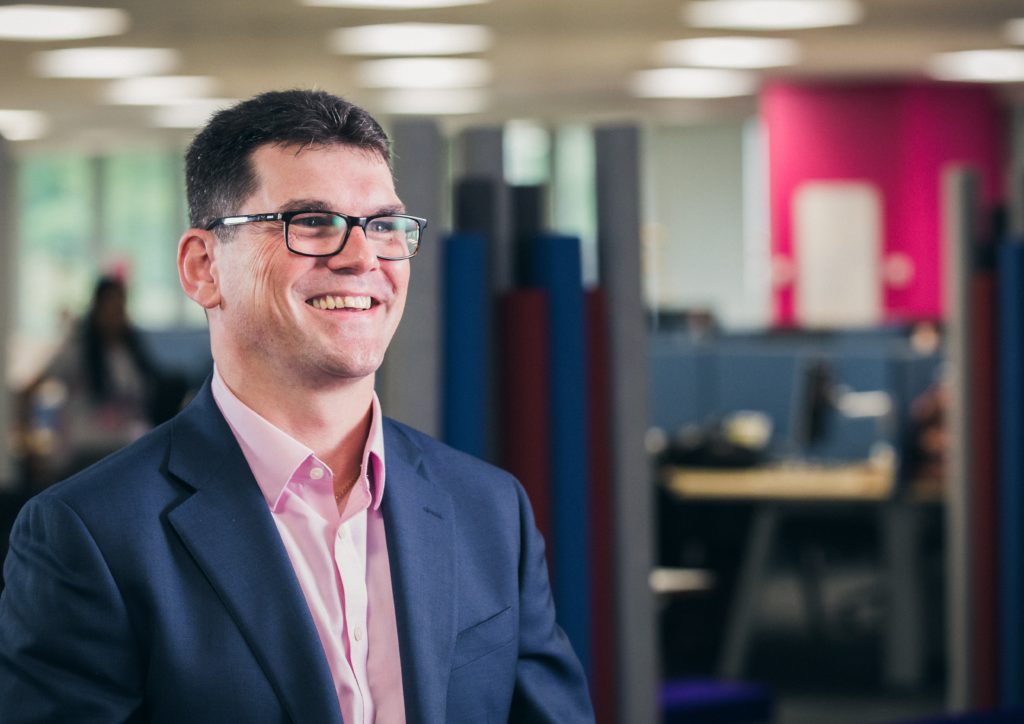
Leigh Feaviour, Principal Solution Architect for Intelligent Automation, BT
The goal is to drive exponential growth in the number of menial hours saved by BT’s employees to further improve both customers’ and employees’ experiences. Feaviour uses the application of RPA to his own department as a benchmark.
“We started to automate the processes in the CFUs (Customer Facing Units; Consumer, Enterprise and Global) first, so we are later in our automation journey within the Technology division, where we are currently saving approximately 1,800 hours per month, every month. The ambition is by the end of this year to move that up to 4,000 hours per month. By the end of next year to be 10,000 hours per month, and by the end of the following year, 23,000 hours per month. So effectively for the next three years to double, double, and then double again. Key to success with such a bold ambition is a strong pioneering delivery arm which is ably led by my colleague Christian Smart.”
“We have a huge growth ambition, and where we support the rest of the business, the idea is that by showing the art of the possible within Technology, they will similarly step up and accelerate their own automations so we can really drive value for our employees and customers across the business.”
BLUE PRISM
PLATFORM & PARTNERSHIP
As many a transformation leader has discovered the hard way, however, simply demonstrating the art of the possible isn’t enough.
A lesson quickly learned, says Feaviour, was that the success of his team’s automation deployments was dependent on forging strong stakeholder ownership across the business. For that reason, BT has what he calls a “federated delivery model”. The Technology division has its own delivery hub while owning the platform and an automation centre of excellence, with other hubs nested in BT’s CFUs, as well as Group Business Services (GBS), which deals with many of BT’s back-office functions.
“IT needs to own the platform, we need to manage the system, we need to provide standards for the delivery… but the closer the businesses are to owning the solution, the more engaged they are because they feel like we’re not taking things out of their control,” he adds.
An enabler of that approach is the Blue Prism platform itself. It was chosen in part due to Blue Prism’s impressive security credentials, but perhaps even more significant to Feaviour’s delivery model is the standout user-friendliness of the platform, which makes developing robots relatively straightforward.
Blue Prism has also enabled another important partner of BT’s automation journey, global professional services giant Cognizant, to apply RPA to its own operations in service of its client. Cognizant supports a vast swathe of the IT infrastructure at BT’s mobile arm, EE, and unilaterally proposed the move as a way of reducing costs to BT.
I see BT becoming a more interesting place to work. We’ll be a much more responsive organisation. We’ll be able to do what we do faster, which will lead to hugely improved customer experience and ultimately shareholder value”
“Cognizant basically said they’d come in at their own cost, they would perform the automation internally using our Blue Prism platform – so we retain the rights to use those robots once they’re developed – and then effectively we would gain-share the benefit,” explains Feaviour.
“All in all, they came with a really, really compelling case and it didn’t take a lot to agree. In fact we are going to try to adopt the same model now with some of our other partners as well, using Cognizant as a lighthouse case.”
That will begin with a forthcoming partner hackathon at which Feaviour intends to highlight Cognizant’s efforts to demonstrate what can be achieved when partners proactively seize upon common business goals.
COGNIZANT
AUTOMATION ACCELERATION
But just because you can automate, it doesn’t always mean you should. A key learning for Feaviour – an education he admits has sometimes been gained painfully – has been knowing when to hold back.
“It’s very important to be quite critical about what to automate and when. So it would be quite easy to just throw them out there and say, ‘find every process that people do. Is it repetitive? Is it data-driven? Right – let’s automate it!’
“That’s not necessarily the right approach.”
In some cases, the Technology team has analysed a process and found that by making the manual tasks involved more efficient for humans then the outcome is improved to a degree that roboticising it isn’t necessary. Furthermore, simply “automating everything we see” can introduce variables and dependencies that go on to impede other strategic initiatives.
“They might put a new system in place, get ready to go live, and then suddenly they find out there’s a bunch of robots hanging off the back of it that all need to be changed before they can do anything with it. So suddenly we’ve gone from a benefit to a disbenefit.”
It’s part of an attention to detail and a conscientious robustness in stakeholder management that Feaviour identifies as perhaps the most important lesson of all.
“It might be another system that’s coming in that we weren’t aware of. It might just be an allergic reaction to automation, which can happen. So getting that buy-in at all levels before we touch anything has been a really important lesson and one that we’re going quite hard on now,” he says.
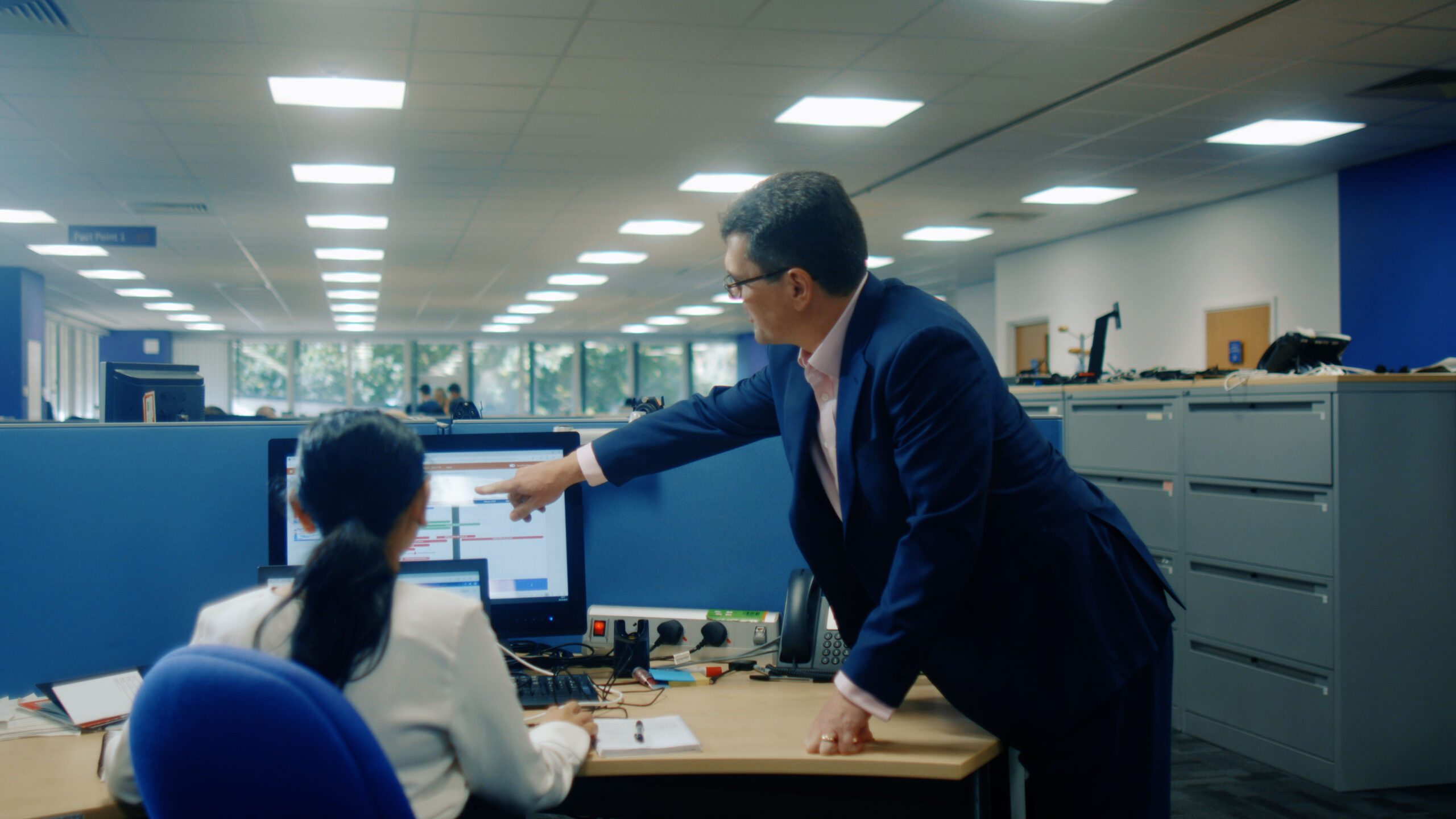
The time clawed back from employees’ valuable time so far is just the beginning of BT’s automation journey. Longer term, Feaviour’s mission is to begin introducing the toolsets and capabilities that will transform BT’s automation efforts with layers of added intelligence.
“In order to move from automation to intelligent automation, we need to be constantly reviewing the systems we’re applying. I have a number of irons in the fire,” he says.
Currently on Feaviour’s roadmap are efforts to put robots to work overnight in service of employees’ next-day mornings, and assisting call-centre workers by intelligently loading up their access to the multiple systems they need to serve customers quickly. Then will come robots to enhance the role of BT’s existing optical character recognition capabilities, and applying ‘human-in-the-loop’ functionality – a system to sit over the top of otherwise unattended robots to trigger them on demand, or create processes that chain their activities together via critical decision-making junctions involving humans.
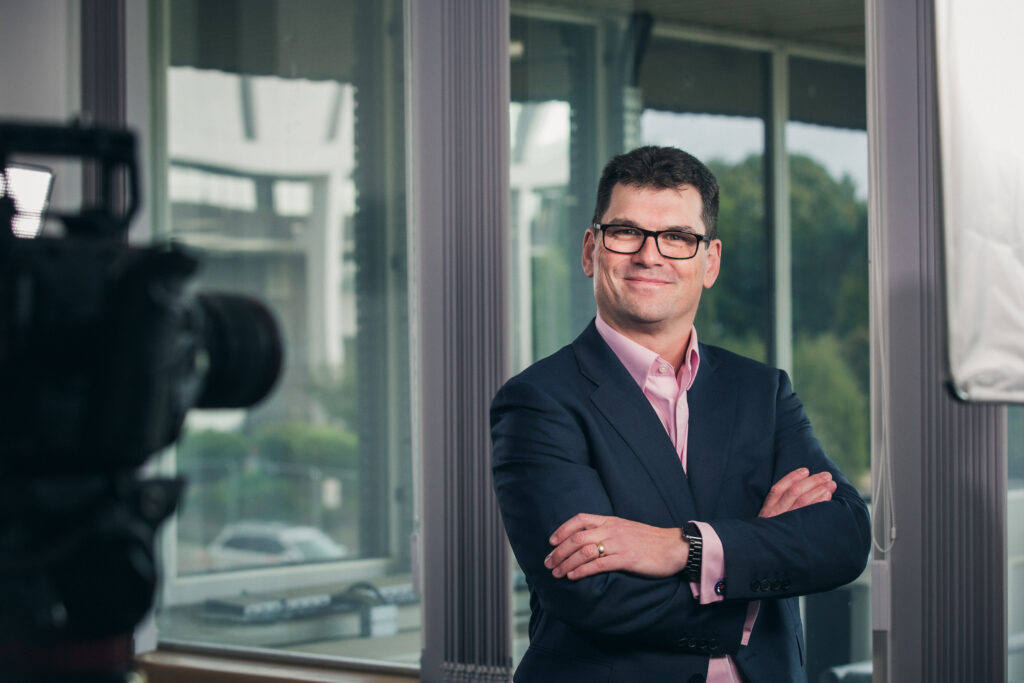
Yet more ambitious is a collaboration between Feaviour and other key leaders across BT to investigate intelligent business process management suite (iBPMS) tools which, importantly for Feaviour, will work seamlessly with RPA.
iBPMS systems are emerging that expand upon traditional BPM tools by streamlining both the acquisition and analysis of vast amounts of data, allowing for immediately actionable insights and fast, iterative process improvements. A hackathon was held at Adastral Park earlier this year involving a number of iBPMS vendors working on use cases presented to them by BT. A key requirement laid down by Feaviour was that robots can be triggered from the iBPMS tool.
He explains: “Those tools are basically designed to orchestrate human processes and activities. So it’s not RPA as such, but it’s a headless solution that sits across multiple systems, and it will take data from those systems and help to orchestrate a person’s journey between them to make it far more efficient, automatically triggering robots where needed.”
Artificial intelligence is another area Feaviour predicts will become a crucial component of BT’s automation journey over time. The first steps are already being taken.
“We’re currently assessing some specific use cases about how we need to apply intelligence to our automation, and then what are the right artificial intelligence vendors and tools that would meet that,” he says.
Chatbots are a hot topic at BT – not just in a basic form to find efficiencies through quick question-and-answer conversational interfaces but extended to integrate with RPA processes so the chatbot can actually take action. Another AI use case concerns classifying incoming emails – of which there are many. BT is working with Google to run a proof of concept and Feaviour is confident that work will lead to a much deeper working relationship with Google through which an array of further AI use cases will be explored.
But he’s keen to sound a note of caution in terms of running away with any ideas of AI’s limitless usefulness. Unsurprisingly, Feaviour reveals that a lot of AI vendors are “quite interested” in BT right now, and a core focus is to corral that interest into something clear-eyed and specifically applicable to the business.
“We have a big opportunity to use some really interesting technologies to drive another step change in our automation capabilities, with all of the benefits to customers and employees that would bring, but we need to be careful to do it in a controlled and measured way,” he says.

AUTOMATIC FOR THE PEOPLE
The strenuous efforts of Feaviour and his team to successfully apply intelligent automation to BT are achieving striking results. But as any newspaper reader knows, with such endeavours come fears for the future.
In BT’s case, every effort has been made to assuage any concerns employees may have that automation is a drive aimed at reducing costs via headcount.
“It’s certainly true that automation can bring out a fear in people. People are afraid that we are trying to automate their jobs away. That’s certainly not the case, but just saying it doesn’t necessarily convince people,” says Feaviour. “One of the things that we’ve done to try to address and tackle that problem is simply the metric that we’re using: We’re very much focused on hours saved.”
The principle of an ‘hour saved’ is that it’s an hour a BT employee can use in more fruitful and rewarding ways. Ultimately, that will mean a better experience for customers as well and, in that, BT sees the powerful upside.
“BT – when in five to ten years, when we’ve achieved and exceeded our automation ambitions – will be a more efficient organisation, it will be a better organisation to work in.
“I see BT becoming a more interesting place to work. We’ll be a much more responsive organisation. We’ll be able to do what we do faster, which will lead to hugely improved customer experience and ultimately shareholder value.”
At the time of writing, BT is launching a brand refresh complete with a bold, simplified logo and an uncomplicated, uncompromising new tagline: “Beyond Limits”.
In the case of Feaviour and his team, that motto has already been taken to heart. BT’s community of employees and customers are already beginning to see the results.

